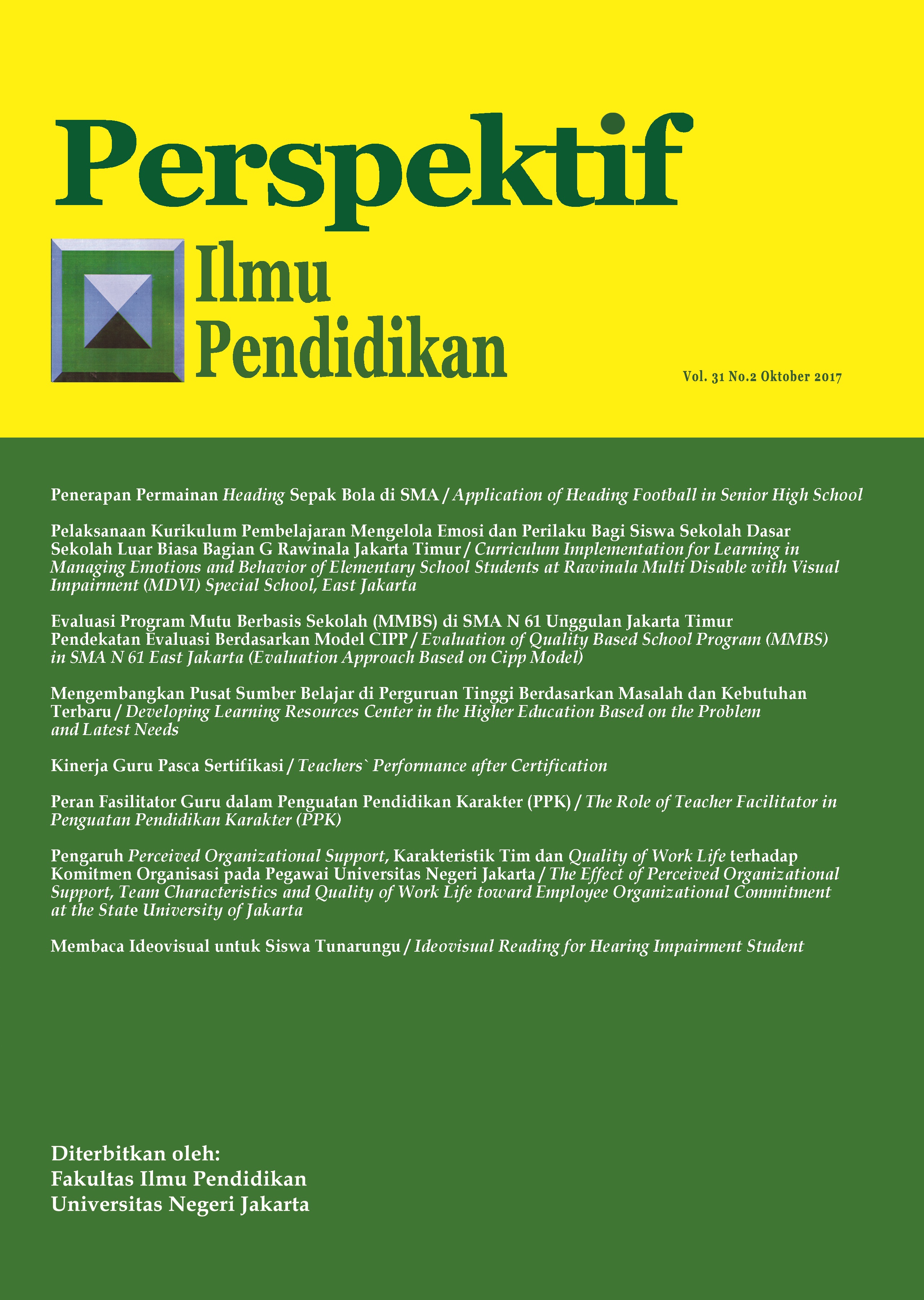PELAKSANAAN KURIKULUM PEMBELAJARAN MENGELOLA EMOSI DAN PERILAKU BAGI SISWA SEKOLAH DASAR SEKOLAH LUAR BIASA BAGIAN G RAWINALA JAKARTA TIMUR
DOI:
https://doi.org/10.21009/PIP.312.2Keywords:
SLB G, curriculum, learning to manage emotions and behaviorAbstract
Many parents and communities are sending children with special needs to the regular schools of inclusive education providers rather than SLB. This study aims to obtain information about the curriculum in the implementation of learning to manage emotions and behavior for elementary school students Special School (SLB) section G (have more than one special needs) Rawinala East Jakarta. This research uses a descriptive method. The focus of this study is the implementation of learning to manage emotions and behavior in students aged 7 to 12 years in SLB G Rawinala. Research contexts include curriculum currently used by SLB G Rawinala, the existence of learning to manage emotions and behavior for learners ages 7 to 12 years, learning objectives, methods used, materials taught, learning media. The results show that learning to manage emotions and behaviors are integrated into classroom learning, the goal is that learners can control themselves when their emotions explode. The learning method is individual. The material in teaching is dependent on the needs and conditions of the learners. Learning media used are objects that can be touched by them and not dangerous. Evaluation of learning using instruments developed by International Perkins Institutions.: SLB G, curriculum, learning to manage emotions and behavior.
Downloads
Published
How to Cite
Issue
Section
License
Authors who publish with this Journal agree to the following terms:
- Author retain copyright and grant the journal right of first publication with the work simultaneously licensed under a creative commons attribution licensethat allow others to share the work within an acknowledgement of the work’s authorship and initial publication of this journal.
- Authors are able to enter into separate, additional contractual arrangementfor the non-exclusive distribution of the journal’s published version of the work (e.g. acknowledgement of its initial publication in this journal).
- Authors are permitted and encouraged to post their work online(e.g. in institutional repositories or on their websites) prior to and during the submission process, as it can lead to productive exchanges, as well as earlier and greater citation of published works.
-
Users/public use of this website will be licensed to CC BY-NC-SA Creative Commons Attribution-NonCommercial-ShareAlike 4.0 International License












